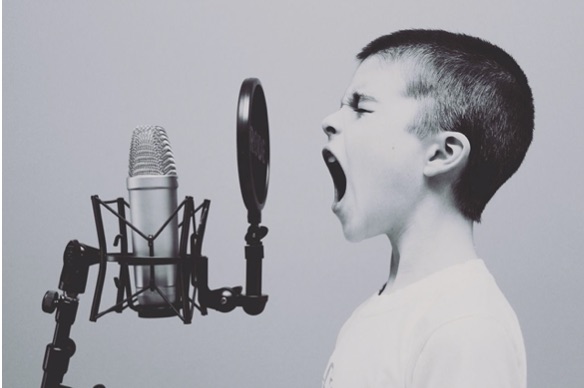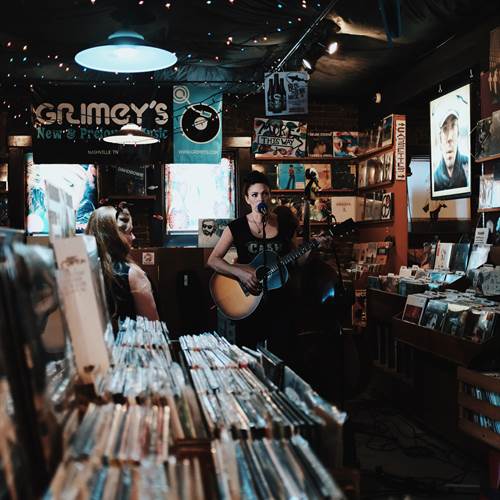
Negotiating Styles: Classical To Pop
Posted Tuesday, January 21st 2014 by David McCall
Even if you’re an amateur pop music aficionado, you recognize the absurdity of approaching every style with the same technique. Imagine for a moment a world in which classical technique is applied to pop music, and pop technique is applied to...
Even if you’re an amateur pop music aficionado, you recognize the absurdity of approaching every style with the same technique. Imagine for a moment a world in which classical technique is applied to pop music, and pop technique is applied to classical music. Hilarious, right?
Of course, this scenario is exaggerated, but many singers mistakenly apply certain techniques to every style of music they approach. I’ve found this is often the case with the singers who are concerned with having their own distinct sound. I completely respect the notion of originality, but what your voice sounds like is more about the shape, length, and condition of your vocal folds and who you most emulate when you sing. The physical characteristics you can’t control for the most part; however, excessive smoking, drinking, or any other unhealthy habits are generally controllable. Also controllable is the degree to which you mimic other artists. It’s not a bad thing; you’re influences are an important part of you as an artist. Furthermore, you can learn so much by trying to match another artist perfectly. But your sound should come from your artistic decisions, such as intention, inflection, breathing etc.
Adjusting Classical Style to Pop
Very often, I’ll work with clients who’ve sung or studied Classically but want to work on their pop technique. I just had a new client who’s a Classical singer who moonlights as a pop artist around New York City. He said in reference to his Pop voice, “It’s really strong and loud, but my high notes aren’t as easy as they used to be,” he said. “I used to be able to sing so high so effortlessly.” This immediately sent red alerts to my singing teacher brain. Anytime a style is performed too loudly is a situation to tread carefully. Loud is not as good as resonant, and loud for prolonged periods of time is not good at all, possibly damaging.
We launched into a few midrange scales, which were enough for me to hear the issue: his larynx was “flexing” closed in response to increased sub-glottic breath pressure, or air pressure below the vocal folds, in the middle voice. As he’d sing higher, he’d increase the breath pressure even more and the larynx would tighten even more. It wasn’t necessarily bad. He could easily get away with a little squeeze and people would chalk it up to being just the way his voice sounds. Yet to watch him vocalize through the middle of his voice, you’d notice the slightest full vocal tract flex occur. His head would ever so slightly jut forward from the chin; the tongue would pull back towards the throat; and seemingly every neck muscle would become a bit more visible.
Lift and “Widen” the Larynx
My student had adjusted his larynx upwards for his Pop sound, which is absolutely crucial for the style. What his larynx needed was some stabilization in order to regain his high notes and relax his vocal tract. I’m not talking about a complete relaxation of the larynx. If your larynx was completely relaxed, you wouldn’t be able to phonate. A loose floppy rubber band will not hum when thumped.
To give you an idea of how this translates to your larynx, form a Lego person hand with yours. Your index finger and thumb form a circle with the middle finger to pinky stacked like a fist. Now flex your hand as though you’d like to close your fist, but don’t let the fist collapse. That flex feeling is the antagonism of the “closer” muscles and the “opener” muscles of your hand and fingers. Similarly, the muscles of the larynx and neck can “open” and “close” our throat.
This client was flexing the laryngeal closer muscles to the point of overpowering his opener muscles; thus, the entire vocal tract was tightening. The result was a loud and heavy sound that increased in volume as pitch increased.
High and Breathy
They go together like Rama Lama Ding Dong. This is the New York Vocal Coaching secret to increasing your Pop range–really any style range for that matter. True breathy singing (without any locked stomach muscles) can relieve vocal tension and increase your higher singing range.
In my studio I call laryngeal stability exercises the weight-lifting portion of the lesson. It’s as if I put a partition made of air between your vocal folds. In order for them to phonate, they must now resist the air to come close enough to make sound without pressing so hard together that they eliminate the breathy quality from the voice. This engages your more gentle closer muscles while simultaneously building up your opener muscles. Isn’t multitasking great?
Stability Exercises: ZZ
ZZ slides are in my top ten favorite exercises. Simply buzz like a bee. Try sliding it up a short scale and slide back down smoothly, maintaining an even buzz throughout. Check your face in the mirror. Are you pulling your cheeks wide? Relax them and try again.
Stability Exercises: Whisper Sing
This next sound is best described as SpongeBob Squarepants’ high, nerdy larynx combined with Patrick’s breathiness. Take a phrase from any song and try whispering it. Mind that you don’t clench your upper abs. Once you can freely whisper it, add the pitch and maintain the whisper. Keep a finger on the larynx to monitor that it stays in its high SpongeBob setting. If it moves, try again.
Conclusion
It takes careful training to maintain a high breathy larynx. You can easily over tighten, press the breath too hard, or create new tension. However, once you feel the correct coordination, you’ll never want to go back. The client I mentioned in this article has become a master at his high breathy larynx and doesn’t think twice about accepting his pop singing gigs. I’m incredibly proud of his hard work.
Back to the studio. Happy Singing!

David McCall
Senior Voice Teacher, Head of Vocal Development
David has become one of the leading instructors of Contemporary Voice in New York City, with clients ranging from Broadway singers (Billy Elliot, Matilda), Classical and sacred music singers, cantors in New York City Synagogues, to Professional Rock and Pop artists, some of which have toured and been signed to record contracts, appeared on shows like The Voice and American Idol, and performed at venues such as SXSW. Additionally, David has taught as a Master Teacher of Contemporary Voice for the NYSTA Comparative Vocal Pedagogy series.

A Prelude
Before I became a professional music director, I had every intention of becoming a musical theatre performer. I studied four years at the prestigious Musical Theatre program at the University of Michigan, then, as was expected, pursued the life of an actor here in New York. But somewhere along the way, I made a turn and didn't quite end up where I'd planned...

How to Get a Gig: A Beginner's Guide
Your voice lessons are going great, you sound fantastic and are ready to take things to the next level. What’s the process?

Why Am I Doing This Again?
I had a one hour break in which to eat, go to the bank, respond to client emails, and be ready to start the second half of a lengthy teaching day. I raced out of the studio past the slow walkers to the bank...